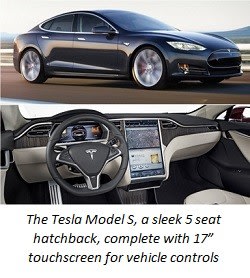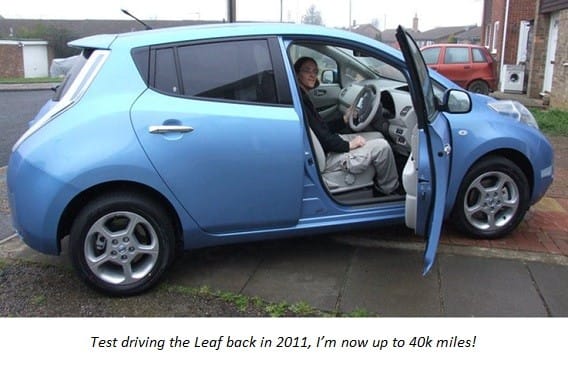Do Androids Dream of Electric Cars?
Follow articleHow do you feel about this article? Help us to provide better content for you.
Thank you! Your feedback has been received.
There was a problem submitting your feedback, please try again later.
What do you think of this article?
I’ve been driving cars with plugs since 2010, and you see more and more of them on the road each day. They’re starting to appear on TV adverts, chargers are starting to appear at motorway services and public car parks, and they’re recognised in government policies with favourable tax rates and purchase incentives. But where have they come from, where are they now, and where are they going?
The Past
In 2010, Nissan released a 100% electric car, known as the LEAF. It marked the return of the electric car, after being absent from the market for almost 100 years - ironically, the invention of the electric starter motor was what ended the fight between combustion engine cars and electric ones in the 1920’s. They produced a compelling package, a medium sized family hatchback, that you can easily recharge from a domestic socket at home, adding about eight miles of range per hour, or a dedicated wall unit at about 12 miles each hour. It could go about 70 miles between charges using it’s 24kwh battery, and with electricity from home the costs are around 2p per mile, or if you have free public or workplace charging, your driving costs are almost nothing.
Nissan also launched a telematics system with the car, celled Nissan Connect, which offers some basic features, starting the heating remotely (great for those frosty mornings!), uploading some driving data (trip distances and fuel economy ratings) and checking your level of battery charge, all from your mobile phone. The back end of those services has been picked up with people developing their own custom apps for setting timers on the remote heating and getting it to work on devices like the Pebble. This toe dipped gently into the waters of telematics was not without issues, a vulnerability allowing the battery to be drained using the remote heating, with nothing more than a cars VIN number and a web browser, was found and reported earlier this year. Nissan also faced issues with vehicles sold in Texas and Arizona, where the punishing heat would cause faster battery degradation. But, in their main goal, of getting a modern, practical, reliable electric car out into the world they succeeded, and many carmakers quickly followed them.
The Present
Today, there are many different electric cars available, from the cheap and cheerful Renault Zoe, to the sporty and carbon fibre built BMW i3, but the vehicle which has become the world’s bestselling electric car is the Tesla Model S. Tesla have taken a very different approach, and delivered a car packed with batteries, (you can choose between 230 and 290 miles of range from either 70kwh or 90kwh batteries) and filled with technology. It’s telematics functions allow you to start the heating, lock or unlock the car, flash the lights or honk the horn, check the cars exact position (and it can be shut down remotely too if needed) and of course see your charge level and receive notifications when your charge has ended. The car is permanently connected to the internet via 3g or 4g, so you can also see live traffic data, google satellite maps, use streaming music services, and browse the web, all on a ginormous 17” touchscreen. 
The Future

And then there’s Tesla. Not content with having the best-selling electric car, last month Tesla revealed their next vehicle, the Model 3. Sized and priced to compete with the BMW 3 Series, they received over 200,000 preorders for the car in 24 hours. They are taking big, bold steps to rethink what a car truly is – the Model 3 will come with Autopilot, the ability to steer, accelerate and brake on it’s own, following traffic, lane markings and speed limits. Doing that means the car is stuffed with sensors, cameras, radar, ultrasonic, and enhanced accuracy GPS, with all of that data being uploaded back to Tesla for “fleet learning”.
Today, Model S cars have a beta version of Autopilot, and drivers have reported that the system is indeed learning, junctions or slip roads where the driver previously had to intervene are now handled correctly, based on that feedback, with new algorithms pushed to the cars overnight. But they aren’t stopping there, to supply the sheer number of batteries required Tesla are building their own battery factory, again rethinking what a car manufacturer is. Overnight their new factory, known as The Gigafactory, will double the number of batteries produced in the world, allowing them to make huge cost savings and control their own supply chain. And they will need it, those 200,000 preorders have become almost 400,000 over the last few weeks, and with an expected battery size of 60kwh in the Model 3, that’s an awful lot of battery cells. One thing is for sure, people are ready to go electric, and by the end of the decade electric cars will no longer be a dream of the future, but a reality of the present.



